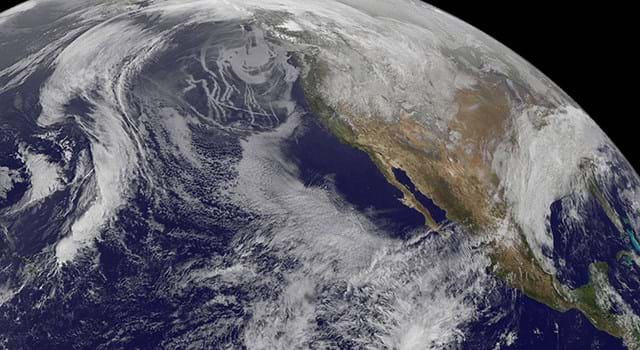Using aerosols to understand our cloud atlas (Day 86)

21st August 2014
When most people think of aerosols they think of spray cans.
Coverage by the media in the 1980s and 1990s of aerosols damaging the ozone layer drove this thinking. However, it is just one type of aerosol or “atmospheric particulate”, cholorofluorocarbons (CFCs), that was causing this damage.
Countries are now phasing out the use of CFCs in line with international protocols.
Aerosols are actually just small particles found in the air that can be produced when we burn different types of fossil fuels.

Studying aerosols could help us better understand the Earth’s changing climate.
The majority of aerosols are thought reflect the sun’s energy, and thus have a cooling affect on the Earth.
However, it is vital to remember that whilst aerosols may limit global warming they can have a negative effect on human health (e.g. can cause lung problems) and a negative influence other areas of our climate, for example causing less rainfall in drought-prone areas.
This means that not including aerosols in climate change modelling can skew the results.
Chemical engineers and scientists from NASA’s Jet Propulsion Laboratory (JPL) and the California Institute of Technology (Pasadena) have calculated how aerosols affect cloud levels over the ocean.
Variation in aerosol levels has two main effects; changing the amount of clouds in the atmosphere and altering the properties of clouds.
Tiny aerosol particles cause water vapour to condense forming cloud droplets or cloud ice particles, thus increasing aerosol levels increases the amount of clouds.
Rising aerosol levels can both raise and lower the quantity of water in clouds, dependent on whether the cloud is raining, atmospheric stability and humidity levels.
The researchers analysed 7.3 million data points collected from satellites in the international constellation of Earth observing satellites (known as the Afternoon Constellation) from 2006-2011. The findings quantify how changes in aerosol levels affect warm clouds over the ocean.
The team found that altering the amount of the clouds and changing their internal properties are both equally important in cooling our planet.
More importantly the team highlight the fact that the total impact from the influence of aerosols on this type of cloud is almost double that estimated in the latest IPCC report (United Nations' Intergovernmental Panel on Climate Change).
John Seinfield, the Louis E. Nohl Professor, and Professor of Chemical Engineering at the California Institute of Technology said, "These results offer unique guidance on how warm cloud processes should be incorporated in climate models with changing aerosol levels".
It is imperative that we work to highlight these factors and consider all the influencing factors on climate change so we can better mitigate this problem.
This work and other investigations by chemical engineers are helping to clarify our thinking on climate change modelling.